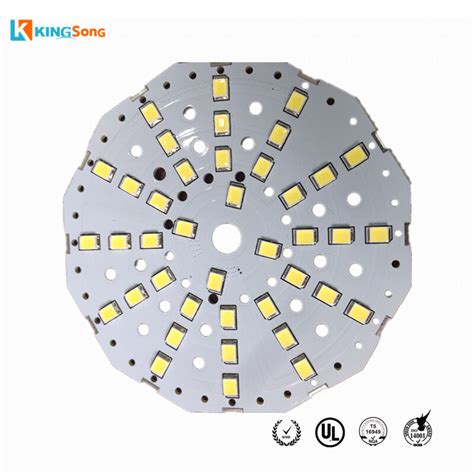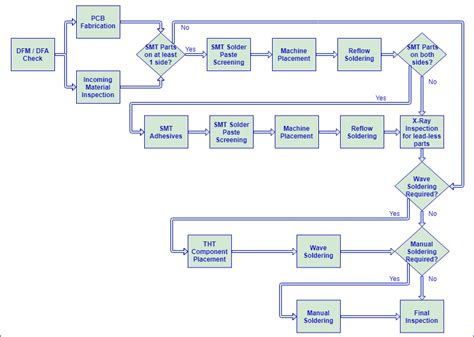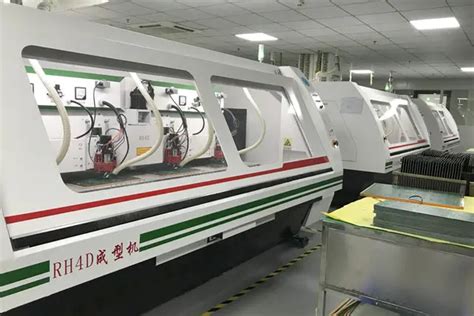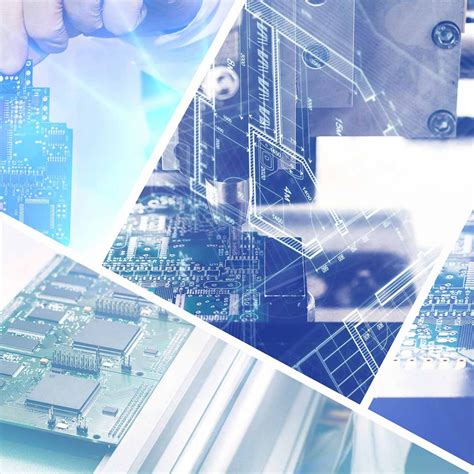Mastering PCB Circuit Board Assembly for Efficiency and Quality

Key Takeaways
Understanding PCB circuit board assembly, or PCBA, is crucial for anyone involved in electronics manufacturing. The assembly process not only impacts the functionality of the final product but also plays a significant role in cost efficiency and overall quality. It is essential to grasp key concepts such as the layering of components, soldering techniques, and the importance of alignment to yield a high-quality finished product.
When it comes to tools and equipment, having the right gear can make a noticeable difference in the PCB assembly process. Utilizing precision instruments helps ensure that components are placed accurately, which ultimately enhances reliability and performance. Moreover, adopting best practices for component placement reinforces consistency and effectiveness across each assembly.
Soldering is another critical aspect where expertise can significantly affect connection quality. Effective soldering techniques help ensure that electrical connections are robust and free from defects that could lead to failure down the line. Implementing rigorous quality control measures throughout the assembly stages also cannot be overstated; it safeguards against potential errors.
In addressing common challenges faced during “PCB assembly,” having a well-defined strategy for troubleshooting can save valuable time and resources. It’s advisable to document past issues and identify patterns that could inform future practices.
“The pursuit of efficiency in PCBA can turn potential setbacks into opportunities for continual improvement.”
Staying abreast of future trends in PCB circuit board assembly, such as automation technologies or eco-friendly materials, will also prepare you for the evolving landscape of electronics manufacturing. In conclusion, mastering these key takeaways will not only enhance your efficiency but also ensure high-quality results in PCBA processes.

Understanding PCB Circuit Board Assembly: Key Concepts and Importance
PCB circuit board assembly, often referred to as PCB assembly or PCBA, is a fundamental process in the electronics manufacturing industry. This process involves the integration of various electronic components onto a printed circuit board, allowing for the creation of complex electronic devices. Understanding the key concepts surrounding PCBA is crucial for manufacturers seeking to enhance both efficiency and quality in their production processes.
At its core, PCB assembly involves several distinct phases, each of which plays a significant role in determining the overall functionality and reliability of the final product. These phases include component placement, soldering, and inspection. Each step requires meticulous attention to detail to ensure that components are correctly aligned and securely attached to the board.
The importance of PCBA cannot be overstated; it influences not just the performance of electronic devices but also their lifespan and resilience under various conditions. A poorly assembled circuit board can lead to failures, increased costs, and delays in product delivery. Consequently, mastering techniques for efficient PCB assembly is essential for meeting market demands.
To streamline procedures and minimize errors during PCB circuit board assembly, manufacturers utilize specialized tools and equipment designed for precision. This ranges from automated placement machines that enhance accuracy in component positioning to advanced soldering methods that ensure strong electrical connections.
Furthermore, implementing a quality control system throughout the lifecycle of PCBA helps mitigate risks associated with defects. Early identification of issues during each phase prevents costly mistakes from escalating into larger problems down the line.
| Phase | Description | Importance |
|---|---|---|
| Component Placement | Positioning electrical parts on the PCB surface | Ensures correct functionality |
| Soldering | Securing components with heat or adhesive | Establishes reliable electrical connections |
| Inspection | Assessing completed assemblies for defects | Early detection of potential failures |
As electronic devices continue to become more sophisticated, understanding these key concepts within PCB circuit board assembly is vital for any manufacturer striving for excellence in efficiency and quality. Embracing these fundamentals will lead to improved product performance and customer satisfaction, thus paving the way for future success in this competitive industry.
Essential Tools and Equipment for PCB Assembly
To effectively carry out PCB assembly, having the right tools and equipment is crucial for ensuring both efficiency and quality. A well-equipped workstation can significantly improve the overall performance of the assembly process. Essential tools include soldering iron, which is fundamental for making reliable solder joints. Additionally, a soldering station equipped with adjustable temperature settings can provide greater control over the soldering process, enhancing the quality of connections.
For precise handling, tweezers designed for electronic components are indispensable; they allow for accurate placement of small parts without introducing damage or contamination. Another critical item is a magnification tool, such as a microscope or magnifying glass, which enables detailed inspection of solder joints to ensure no defects are present.
Moreover, incorporating a PCB holder into your workspace can elevate your efficiency by allowing you to secure the board at an optimal angle while assembling, reducing strain and enhancing precision during component placement. The use of an ESD-safe workstation is also important, as it helps protect sensitive electronic components from electrostatic discharge throughout the PCBA process.
Finally, don’t overlook the importance of proper cleaning materials to maintain a contamination-free environment during assembly. Utilizing these essential tools and equipment not only fosters better practices in your PCB assembly operations but also plays a pivotal role in achieving superior quality in your final products.
Best Practices for Component Placement and Alignment
When it comes to pcb assembly, proper component placement and alignment are crucial for achieving functional and reliable circuit boards. Start by ensuring the design files are meticulously verified against the physical layout of the PCB. This step minimizes errors in component position, which is often a common issue in pcba processes. Use visual inspection techniques to confirm that components match their designated spots on the board according to the bill of materials (BOM). Effective use of automated assembly equipment can enhance placement accuracy, but operators still play a vital role in quality control.
Solder paste application is another critical factor in component alignment. Apply the solder paste evenly to avoid issues such as misalignment during reflow soldering. Furthermore, consider the orientation of polarized components; placing them correctly from the outset prevents costly rework later in the process. Utilizing tools like alignment jigs can also facilitate precise positioning, particularly for large or oddly shaped components.
In addition, try to establish a solid workflow that includes regular calibration of placement machines and equipment, ensuring optimal performance during assembly. Implementing consistent methods for inspection helps identify potential alignment issues before they escalate. In summary, executing these best practices significantly improves component placement and alignment during pcb assembly, leading to increased efficiency and superior quality in your final product.
Soldering Techniques for High-Quality Connections
Achieving high-quality connections in pcb assembly is crucial for ensuring the reliability and longevity of electronic devices. The primary method of creating these connections is soldering, which requires precision and expertise. One essential technique is the use of the right type of solder; lead-free solder is often preferred for its environmental benefits, while traditional lead-based solder may still be favored in some applications due to its superior flow characteristics. The temperature settings on soldering tools must also be carefully managed; too high a temperature can damage sensitive components, while too low can result in weak joints.
Moreover, proper hand placement and steady hands are vital during the process to prevent mistakes, like cold joints and bridging between pads. Utilizing high-quality soldering irons with fine tips allows for precise application, making it easier to handle dense pcba layouts. Additionally, flux plays a significant role in promoting better wetting of the solder to metals, ensuring a strong bond is formed during the cooling stage.
Implementing these techniques not only enhances the quality of individual connections but also contributes to improving overall PCB reliability—especially important in high-frequency applications where performance is paramount. Investing time in mastering these soldering skills can yield remarkable benefits in both efficiency and output quality during the pcb assembly process.

Implementing Quality Control Measures in PCB Assembly
Quality control measures are essential in PCB assembly to ensure that the final product meets both functional and aesthetic standards. One of the primary steps in maintaining high quality is to establish clear and rigorous inspection protocols throughout the PCBA process. Implementing regular checks at each stage of assembly mitigates the risk of defects. This involves utilizing automated optical inspection (AOI) systems to identify any discrepancies in component placement or solder connections, thus allowing for early intervention when issues arise.
In addition to machine inspections, incorporating manual checks by skilled technicians offers a layer of nuanced oversight that machines may miss, especially regarding aesthetic aspects or subtle alignment issues. Developing a comprehensive set of criteria for evaluations can help standardize these assessments, ensuring consistency across all assembly operations.
Moreover, ongoing training for employees on best practices not only enhances their skill set but also encourages a culture of quality throughout the organization. Regular reviews and updates of these practices keep teams informed about potential pitfalls and new techniques, reinforcing their commitment to excellence in PCB circuit board assembly. By combining technology with human insight, manufacturers can significantly improve the reliability and quality of their PCBA, leading to enhanced customer satisfaction and reduced rework costs.
Implementing robust quality control systems emphasizes proactive prevention rather than reactive corrections, ensuring that any irregularities are caught early in the process. As a result, firms can optimize their overall workflow while consistently delivering high-quality electronics that meet market demands.
Common Challenges and Solutions in Circuit Board Assembly
In the world of PCB assembly, various challenges can hinder the efficiency and quality of the assembly process. One common issue is component misalignment, which can lead to poor solder joints and operational failures. To address this, implementing precise alignment techniques during placement is crucial. Utilizing advanced equipment such as automated pick-and-place machines can significantly enhance accuracy, ensuring that components are positioned correctly on the circuit board.
Another significant challenge in PCBA is dealing with thermal management, as overheating during soldering can damage sensitive components. Employing appropriate soldering techniques, such as using controlled temperature profiles and selecting suitable solder types, helps mitigate this risk. Regular training for personnel on soldering best practices is also vital to maintain high-quality standards.
Additionally, if circuit boards are not designed for manufacturability, it may lead to increased production times and costs. Collaborating with design engineers early in the development phase can help identify potential issues that may arise during assembly. This proactive approach ensures that the individual elements of a PCBA are optimized for both functionality and ease of assembly.
Lastly, implementing comprehensive quality control measures throughout the assembly process enables early detection of defects. Conducting routine inspections using automated optical inspection (AOI) systems can catch discrepancies that manual checks might miss. By addressing these common challenges with targeted strategies, companies can streamline their PCB circuit board assembly processes while enhancing overall product quality and reliability.
Optimizing Workflow for Greater Efficiency in Assembly
Efficient PCB assembly is essential for producing high-quality circuit boards while minimizing time and costs. Several strategies can enhance workflow and ensure that each step of the PCBA process runs smoothly. First, organizing the assembly area is critical; ensuring that tools and components are within reach prevents unnecessary movements that can slow down the workflow. By adopting a 5S methodology—Sort, Set in order, Shine, Standardize, and Sustain—teams can maintain an orderly workspace that promotes efficiency.
Incorporating advanced software solutions for inventory management allows for real-time tracking of components, preventing delays caused by shortages or misplacements. Furthermore, training staff on best practices related to component placement and alignment significantly reduces errors during assembly. Using automated systems for repetitive tasks can also minimize human error and increase throughput.
Additionally, regular team meetings to review workflow processes provide opportunities to identify bottlenecks in the pcba assembly process. These discussions can lead to innovative solutions that streamline operations further. Lastly, implementing feedback loops where operators report issues promptly ensures a continuous improvement cycle, paving the way towards a more efficient assembly line while maintaining the highest quality standards in production.
Future Trends in PCB Circuit Board Assembly: Innovations to Watch
As technology continues to advance, pcb assembly processes are evolving with a myriad of innovations designed to enhance efficiency and quality. One prominent trend is the integration of artificial intelligence (AI) and machine learning in pcba operations. These technologies facilitate predictive maintenance, which optimizes equipment performance by anticipating potential failures before they occur. Additionally, the adoption of automation in pcb circuit board assembly is becoming increasingly prevalent, allowing for streamlined workflows and reduced human error. Robotic process automation (RPA) is particularly noteworthy, as it enables precision in component placement and soldering, ensuring consistent quality across all units.
Another significant trend is the rise of flexible circuit boards, which cater to the growing demand for compact and lightweight electronic devices. This innovation allows for greater design freedom while maintaining high performance. Furthermore, advancements in eco-friendly materials and processes are gaining traction within the industry, as sustainability becomes a top priority for manufacturers and consumers alike. By incorporating materials that minimize environmental impact and adopting practices that reduce waste during pcba, companies can appeal to a more conscious market.
Moreover, predictive analytics tools are being integrated into assembly line operations, providing valuable insights into operational efficiency and potential bottlenecks. This data-driven approach not only helps optimize workflows but also assists in making informed decisions regarding resource allocation.
Overall, keeping an eye on these future trends will be essential for businesses looking to maintain a competitive edge in pcb assembly by leveraging innovations that promise to redefine assembly processes while ensuring top-notch quality.
Conclusion
In the fast-evolving world of PCB circuit board assembly (or PCBA), finalizing your processes with efficiency and quality is paramount. The culmination of effective assembly practices leads to a product that meets both customer expectations and industry standards. With an understanding of essential techniques identifying critical areas such as component placement, soldering methods, and quality control, businesses can mitigate common challenges. Emphasizing the importance of robust workflow optimization further supports the drive for efficiency in pcb assembly tasks. As innovations continue to emerge, adapting to future trends in technology will not only enhance assembly processes but also guarantee that products remain competitive in the market. Overall, mastering these aspects of PCB circuit board assembly ensures success and gives a solid foundation for growth within the industry.
FAQs
What is PCB circuit board assembly?
PCB circuit board assembly, often referred to as pcba, is the process of connecting electronic components to a printed circuit board (PCB) to create a functional electronic device. This involves various steps such as component placement, soldering, and testing.
Why is quality control important in PCB assembly?
Quality control is essential in pcb assembly as it ensures that each circuit board meets the required specifications and functions correctly. By implementing rigorous quality checks throughout the process, manufacturers can minimize defects and enhance reliability.
What tools are necessary for efficient PCB assembly?
Essential tools for pcba include soldering equipment, pick-and-place machines, reflow ovens, and inspection systems. These tools help streamline the assembly process while ensuring high-quality connections.
How can I overcome common challenges in circuit board assembly?
Overcoming challenges in pcb assembly involves thorough planning and attention to detail. Solutions may include using automated equipment for precision placement, implementing efficient workflow techniques, and conducting regular training sessions for staff.
What are future trends in PCB circuit board assembly?
Future trends in pcba include advancements in automation technology, which will allow for faster and more accurate assemblies. Additionally, there is an increasing focus on developing environmentally friendly materials and processes that reduce waste.







